Home rose does not bloom what to do. Video: #Hibiscus Chinese rose Blossoms in the garden. Why is it not blooming
A representative of the mallow family, whose homeland is considered to be the Celestial Empire or Western India, hibiscus has long been entrenched in our apartments and estates, having found loyal fans among Russian flower growers. But the southern origin of the plant often becomes an obstacle in its development at home or in the conditions of a domestic garden, since this culture is very demanding. This article will help flower growers, who are tormented by the question of why hibiscus does not bloom, to correct the situation. So, let's talk about this interesting plant.
Description
The genus of hibiscus, wild and "domesticated", which includes about two hundred species, is quite extensive and is represented various plants- trees, shrubs, perennial and annual herbs. The basis of the genus is nevertheless made up of woody shrubs - decorative flowering and striking with solemnity and magnificence. This is how Russian flower growers know this plant, calling it a Chinese rose and successfully growing it at home. In nature, hibiscus grow in the humid tropics and subtropics, often forming lush flowering thickets.  The addiction to the abundance of moisture in these plants gave rise to another unofficial name, but emphasizing their features - marsh mallow.
The addiction to the abundance of moisture in these plants gave rise to another unofficial name, but emphasizing their features - marsh mallow.
Large exquisite flowers with bright, graceful corollas, blooming at the ends of the shoots, are very beautiful. They made a plant national symbol Hawaii and a particularly revered culture in many countries of East Asia and South America. dark green leaves varying degrees incisions, dense and petiolate, support the decorativeness of the plant. The fruit-box, splitting into several wings, contains many seeds, smooth or slightly pubescent.
Hibiscus, the photo of which is presented in the publication, is not only decorative, but also useful. Young leaves and stems of many plant species are eaten, and seeds, fruits and roots serve as raw materials in pharmacology, perfumery medicine. We will learn the features of growing crops in the home and garden.
Meet the home hibiscus
This is a well-known greenhouse plant, evergreen ornamental shrub, fast growing and delighting with luxurious flowering every spring and summer. There are more than 500 varieties of this crop, which we refer to as indoor 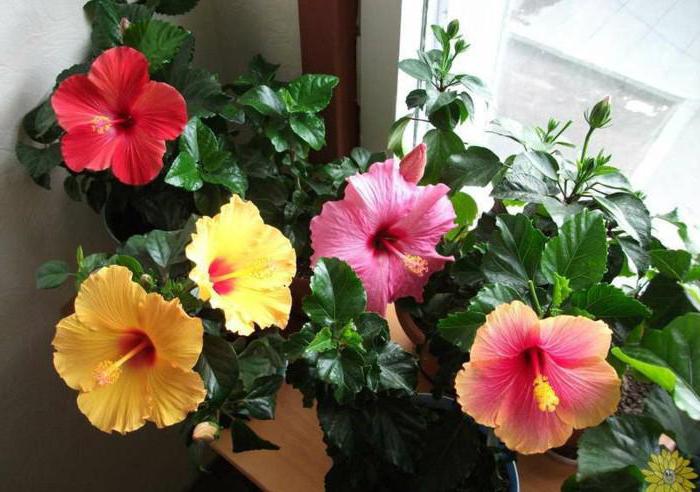 The culture is distinguished by dark green oval leaves with a figured-jagged edge and a glossy surface, as well as flowers - single, large, reaching 15 cm in diameter, simple or semi-double, according to varietal features. Depending on the variety and color of flowers, it is extremely diverse, shades vary from purple-red and purple to golden and pink.
The culture is distinguished by dark green oval leaves with a figured-jagged edge and a glossy surface, as well as flowers - single, large, reaching 15 cm in diameter, simple or semi-double, according to varietal features. Depending on the variety and color of flowers, it is extremely diverse, shades vary from purple-red and purple to golden and pink.
Features of growing room culture
Plants often forgive flower growers for mistakes in agricultural cultivation, but the consequences still occur and manifest themselves in different ways. For example, you can understand why hibiscus does not bloom by analyzing the quality of all caring activities - watering, degree of illumination, compliance with the necessary temperature regime and transplants.
Light-loving hibiscus requires good lighting, tolerates even short-term exposure to direct sunlight. He needs the light all year round, both during the growing season and during dormancy. The air temperature in the room where the culture is located should be moderate and maintained at:
- in spring and summer +18...+22 °С;
- in autumn and winter +14...+16 °С.
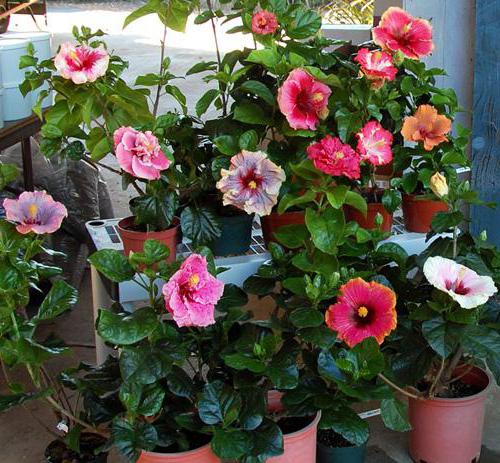
Decreasing the temperature to +8...+10 °C may cause the leaves to fall and stop the budding.
watering
Particular attention is paid to the rules for watering such lovers of moisture as hibiscus. The photos shown in the article emphasize the beauty and decorativeness of the culture, and this is due to proper hydration. Generous watering is provided during the active growing season, maintaining a normal level of soil moisture. Water the plant as soon as the topsoil begins to die. In winter, the intensity is reduced by moistening the soil about once a week or less often if the flower is kept in a room with low temperatures (+12 ... +14 ° C). But the plant is calm about air humidity, but welcomes spraying warm water, taking them as a means of increasing decorativeness and a hygienic procedure.
top dressing
Rapid growth and high-quality flowering of hibiscus is impossible without regular feeding of the plant. In the spring-summer season, it is monthly fed with nitrogen-containing mineral fertilizers stimulating long flowering. Fertilization in winter is due to the conditions of detention. If the plant is in a familiar room with a comfortable temperature, then every 1-1.5 months it needs phosphorus-potassium supplements with a solution concentration reduced by half of the recommended rate. When in cool conditions, hibiscus do not fertilize. 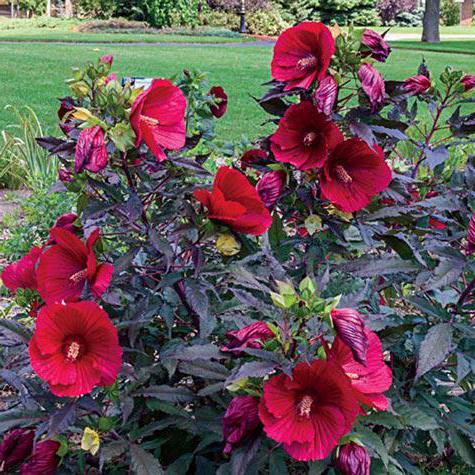
Correct content home plant will not cause anomalies in development, and the question of why hibiscus does not bloom will not arise. We examined the features of growing room culture, but there is also a garden one.
Syrian hibiscus: planting and care
Common decorative perennial shrub grown in open spaces is the Syrian hibiscus. The southern origin of the plant also suggests its thermophilicity. And if it is impossible to cultivate it in the gardens of northern latitudes, then in warmer regions the Syrian hibiscus is successfully cultivated, surrounded by care, warming for the winter and caring for it with high quality.
Just like home, it requires attention. Illiterate care for him will provoke the same question - why the hibiscus does not bloom. We list the conditions that must be met when growing it in a summer cottage.
How to care for garden hibiscus
Syrian hibiscus blooms luxuriously only with sufficient sunlight, it frankly does not tolerate shade. In an open, bright area, the culture grows up to one and a half meters, while the bush is very compact, even elegant.
The flowers of the Syrian hibiscus are simple or double, and terry varieties more frost-resistant than simple ones. Hibiscus has no preferences for the structure and composition of soils. It adapts equally well to soils where roses are traditionally grown. However, the soil must be water and breathable, fertile. 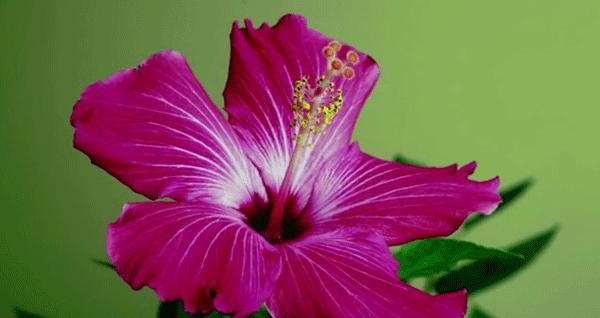
The bush requires moderate watering. The soil should not dry out, but stagnant water is dangerous. It is he who can cause a variety of problems in a plant such as hibiscus. Leaves turn yellow, young shoots dry up, buds fall off - all this is the result of unreasonably abundant watering.
Needs garden hibiscus top dressing with high content phosphorus. Do them every 15-18 days. In autumn, the plant is simultaneously fertilized with a potash preparation. This will help him get through the winter.
These are the basic care steps for exotic hibiscus, an elegant ornamental plant.
Chinese rose(Hibiscus) - tall ornamental culture. Differs in large flowers of various flowers and their shades. Possible colors: red, orange, white, purple. Numerous cultivars have been bred with countless flower shades up to black.
The culture can grow up to 4.5 meters. Mature trunks are distinguished by an almost black color of the bark. The leaves can reach a length of up to 15 cm.
The plant is also called hibiscus. He fell in love with flower growers not only for their decorative qualities, but also for the ease of maintenance and care. However, sometimes you have to make every effort to ensure that the Chinese rose blooms profusely and magnificently.
hibiscus bloom
The Chinese rose is planted not only for unpretentiousness, but, first of all, for beautiful abundant flowering. Despite the fact that the flowers do not bloom for a long time - only 2-3 days, they open gradually, one after another. As a result, it seems that the flowering is very lush and long. 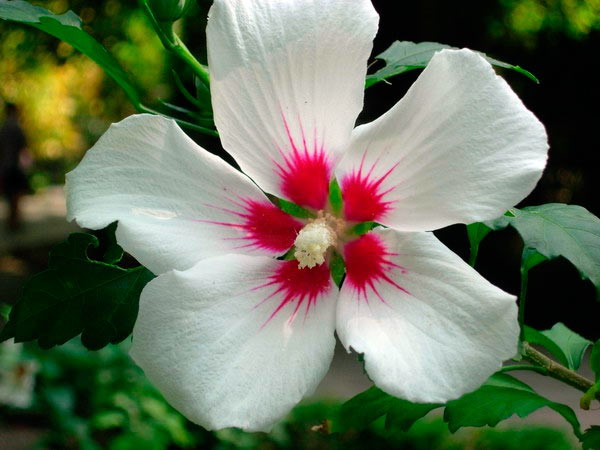
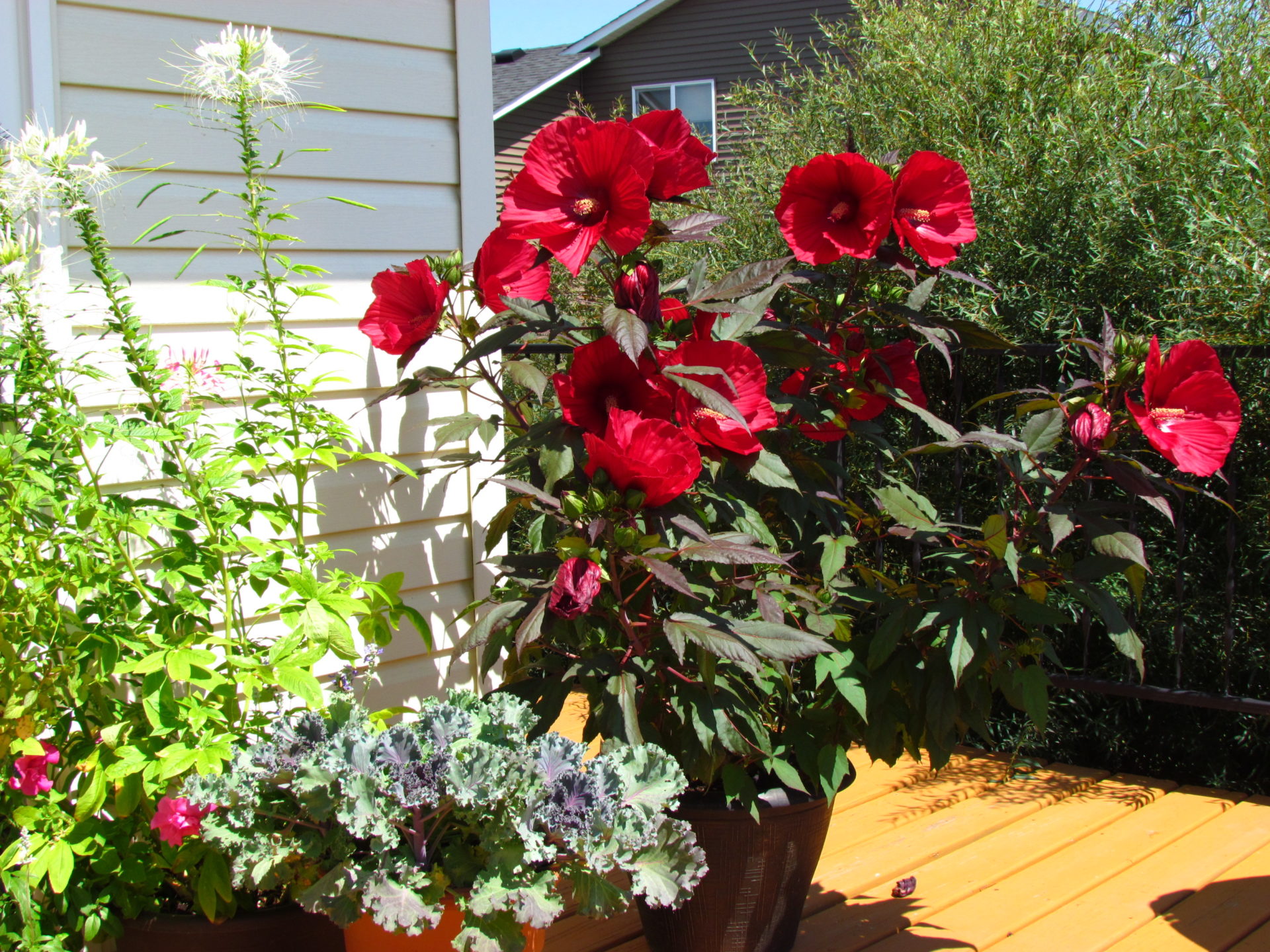
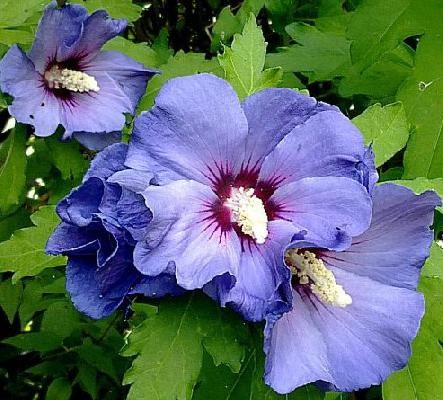
However, flowering depends on the proper development of the culture itself. Opened flowers can reach a diameter of 14 cm. Sometimes they can exceed 15 cm. Depending on the variety, both terry and simple flowers. The colors are varied: white, pink, cream, lilac, purple, red. The petals are thin.
Hibiscus flowering with proper maintenance and healthy development starts in spring and ends in autumn.
Reasons for the lack of flowering hibiscus
Often, the owners of this beautiful culture are faced with an extremely unpleasant problem - the lack of flowering. What could be worse? After all, for the sake of flowers, hibiscus are planted.
It is required to understand the reasons for the refusal of a rose to bloom and decide this problem. We'll have to reconsider the care of the plant. After all, it is not proper care - main reason such a phenomenon.
Main reasons:
- Too big pot. Until the roots of the plant fill the entire container, the leaves will grow vigorously, but this will negatively affect flowering;
- Wrong temperature in winter time. Optimum temperature hibiscus content in winter should be about 15 degrees, but no more;
- Regular pruning and pinching. More precisely, their absence Since flowers form only at the tops of young branches, the branches need to be cut and pinched to form a compact, dense bush;
- Excessive hydration soil during the growing season;
- Lack of light. Hibiscus prefers bright diffused light, but direct rays are fraught with burns;
- Excess nitrogen in the soil. It is required to limit the application of nitrogen fertilizers.
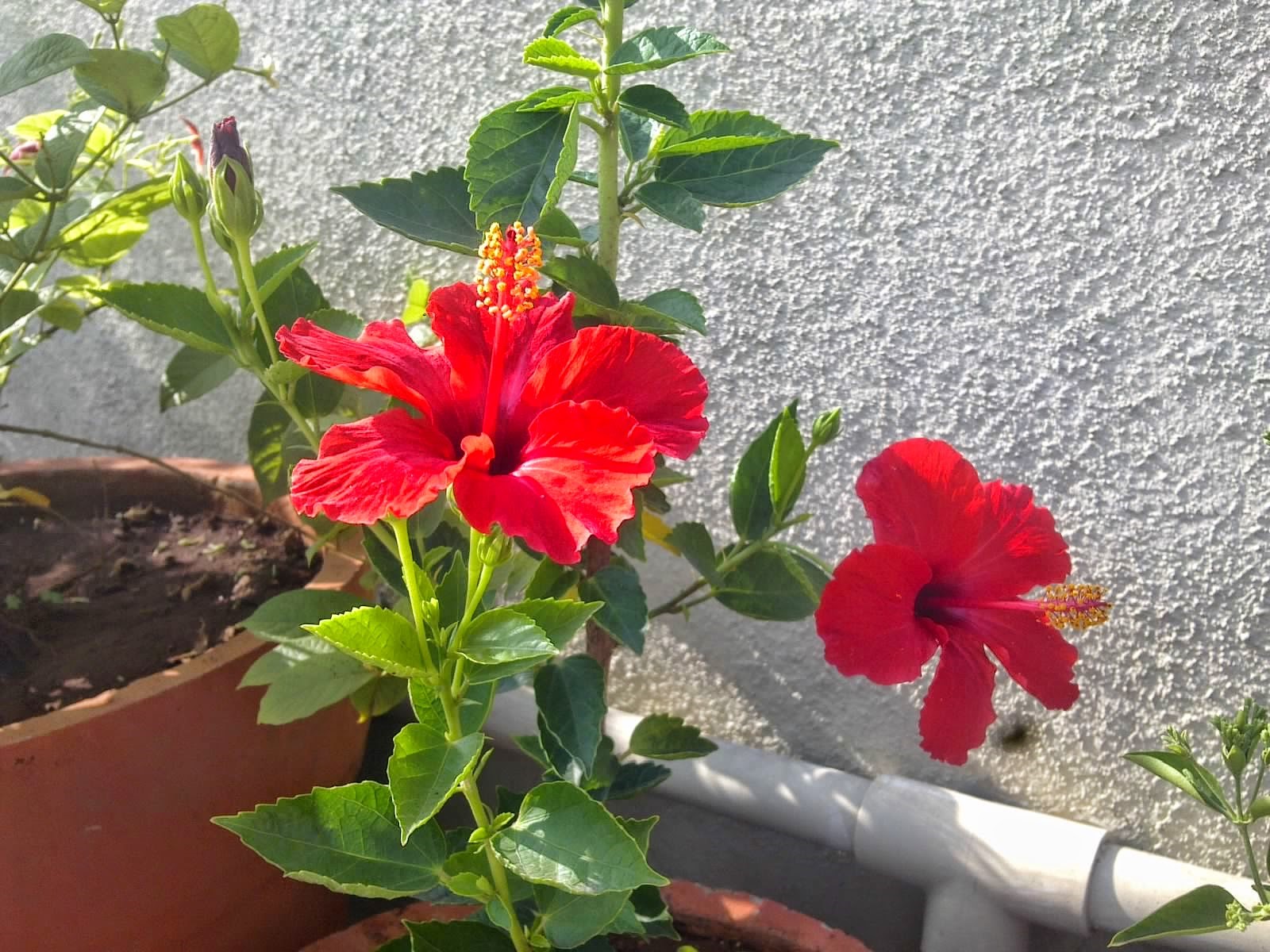
What to do to make hibiscus bloom luxuriantly and plentifully?
In order for the Chinese rose to please with its lush flowering every year, it is necessary to observe the features of the content of the culture:
- The location in the apartment is a southern or eastern window with shading during the midday sun. In the shade the flower will not bloom;
- Proper wintering. The temperature in winter should not exceed 15 degrees. If the temperature is less than 10, then the plant will drop foliage;
- Pot and soil. The pot should be a little cramped for the root system, only then the culture will please with flowering; The pot needs good drainage. The acidity of the soil should be neutral. Clay turf is required in the composition;
- Pruning must be systematic, otherwise the bush will grow strongly, but will not bloom;
- Water for irrigation should be soft without chlorine and scale. The temperature is about 30 degrees Celsius. In summer, you need to water abundantly and regularly, and in winter - less often. However, overflows are dangerous for the plant;
- The introduction of fertilizers. For flowering, fertilizers with a high content of phosphorus are considered extremely effective;
- No temperature fluctuations or drafts.
Thus, in order for the Chinese rose to bloom, it is necessary to observe the peculiarities of care, to feed the culture only in the summer-spring season. It is recommended to choose fertilizers with a high content of phosphorus. This promotes lush flowering. However, an excess of fertilizing, on the contrary, can harm the plant. During the dormant period - in winter - it is not necessary to feed the culture.
For irrigation, you need to take soft and settled water. Hibiscus does not tolerate water with scale and chlorine. Therefore, before watering the culture, it is required to defend the water for several days. You can also filter or boil the water.
Important! During the formation of buds, you can not turn the pot and change its location.
Pests and diseases that interfere with hibiscus flowering
The main diseases that prevent the flowering of the Chinese rose:
- Non-infectious and infectious chlorosis. The reasons are: excess nitrogen in the soil, fungus;
- Fungal infections lead to bud drop;
- Root rot can lead not only to the absence of flowering, but also to the death of the plant.
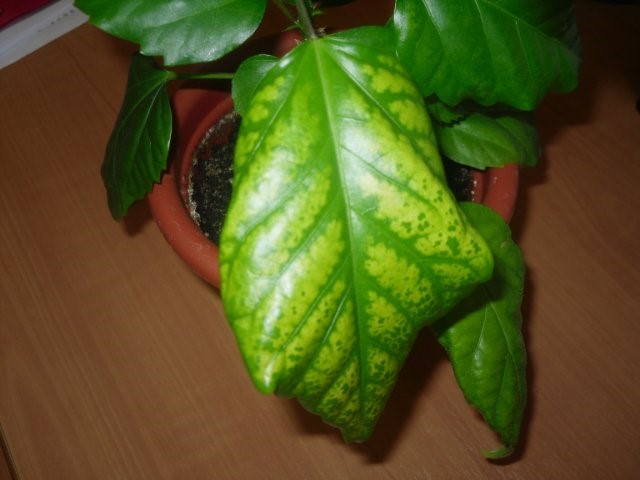
Chlorosis (lack of iron) on leaves. Solutions - transplants, top dressing, time for rehabilitation.
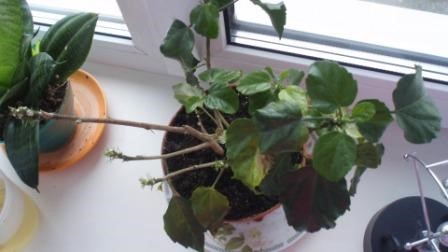
A flooded plant affected by root rot.
Infectious fungal diseases are treated with fungicides.
Among the pests should be highlighted:

These pests usually infect leaves and stems, they practically do not affect flowering. However, huge accumulations without treatment can lead to the death of the culture. These pests are treated by wiping the plant with soapy water and insecticidal preparations.
About the reasons for the video
The author of the channel tells about his mistakes when growing hibiscus Landscape Design On one's own". Along the way, the author also shows other plants of his collection.
A bright representative of the mallow family, Hibiscus (Hibiscus), came to us from the tropics South-East Asia. There are more than two hundred species and varieties of hibiscus that are successfully grown in indoor and garden conditions. Today, breeders have taken up this flower tightly, thanks to their work, new and new beautiful hybrids appear. In warm climatic zones our country hibiscus grows in open ground, it perfectly tolerates dry summers, as well as short frosts down to minus 10-15 degrees. In appearance, it is an evergreen or deciduous shrub or small tree.
AT indoor floriculture the most common Chinese hibiscus (Hibiscus rosa-sinensis), it is also called Chinese rose or Chinese rose. This plant is considered unpretentious, easy to care for. But from time to time complaints are received due to the lack of flowering. There may be several reasons for Chinese roses not to bloom.
Hibiscus does not bloom: reasons
Hibiscus obeys the seasons. In the spring he begins life cycle, phase of active growth, followed by flowering, by autumn, the plant gets tired and needs to rest. Many types of hibiscus leave their foliage for the winter, and sometimes the Chinese rose does the same. Inexperienced flower growers take leaf fall for a disease and begin to treat the plant, and when bare branches remain, they throw it away, thinking that it is gone. In fact, the hibiscus is going to rest. Wintering is required for any hibiscus, evergreen and deciduous, including Chinese rose. What does this have to do with flowering, you ask? Directly. Flower buds in Chinese roses are laid only when low temperatures. In nature, this happens naturally in the fall, but at home, cooling must be created artificially. If it wasn't for the early start heating season, then the hibiscus would have had enough coolness in September-October, but usually at this time the batteries are already in full operation. Because of this, hibiscus usually blooms luxuriantly in the halls of various institutions, where the temperature in the off-season is kept at 13-16 degrees.
To make the Chinese rose bloom at home, she needs to find the coolest corner in the house and keep the plant there until spring. That's the whole secret of flowering. Do not forget that during the dormant period, the flowers are watered very rarely and a little bit, only so that the earthen ball does not dry out completely. In mid-February, the Chinese rose is transferred to heat, watering is increased and the plant awakens.
Hibiscus should be pruned every few years., it also has a positive effect on flowering. Flowers are formed only on young shoots: plants that have lived for a long time without pruning do not bloom well or at all. Prune the Chinese rose in autumn or spring before waking up. Large and old branches can be cut to half or two-thirds, younger ones - to one-fourth of the length.
If all the conditions are met, and the hibiscus still does not bloom, then maybe the reason lies in overfeeding the plant with fertilizers. When nutrients too much, the Chinese rose grows green mass, but refuses to bloom.
Hibiscus are cultivated as large or small bushy or standard plants, different shape the crowns of which can be obtained by timely correct pruning.
To increase the decorativeness of the crown and stimulate the development a large number young shoots that form flowers ( flower buds in hibiscus, they are laid on the shoots of the current year), after transplanting (for young people) or replacing the top layer of soil (for adults), the plant must be cut to a bud at a distance of about 15 cm from the base. When new shoots begin to form, it is necessary to remove the weak ones and leave the healthiest ones.
To delay flowering until autumn or winter, plants should be transplanted and pruned in May. Until then, they should be dormant with very moderate watering. In July, cut again. As a result, flower buds are formed only in early autumn. The resulting pruning branches can be used for propagation.
The absence of flowers in the presence of lush numerous foliage - the plant is overfed with fertilizers with a high nitrogen content; content in an insufficiently bright place; insufficient watering during the active growing season;
Was not castrated by mistake... (like a room...)
A very tricky plant. Spray every day and water frequently. When buds appear, water less. Selling books about indoor flowers you can read how to take care
Unfortunately, mine is not in color (and when I bought it bloomed, it was very beautiful) such large flowers, bright red!
it is capricious, it is hard to take care of it (
I don't know what's tricky about it. Grows like a weed. But what does not bloom - so it is necessary to feed it well, then it will bloom. True, he has one bad habit - he does not like when the angle of incidence sun rays is changing. So put it on and don't pull back and forth. Make a mark on the pot and always place it on one side towards the light.
Maybe he went green? Try pinching some branches. Mine responds very well to pruning, begins to bush and bloom.
BUT big bushes always bloom worse. You will grow a new one for the color. It will also have bigger flowers. Perhaps fattening or light is not enough. I have an old one shaped like a tree. is already starting to pick up buds, but abundant flowering I don't expect from him.
It blooms in a close pot (in general, many plants do not bloom in large pots, but go green), in good light, after pruning after three months (on new shoots), it also blooms without pruning. If you water with fertilizer, then for flowering plants(excess nitrogen inhibits flowering). I rearrange (in the summer on a glazed loggia) and turn it so that it does not lean to one side, in my opinion this does not affect flowering. In general, the plant, in my opinion, is not capricious. Yes, even with irregular watering, it drops buds.
Hibiscus in the spring should be cut off by about 1/3, feed, water and spray, more light but not direct sunlight, preferably on a balcony. And it will bloom for you (Just don’t fill it, the geeks of the bays don’t survive well, especially if it’s a Dutch individual).
hibiscus is very fond of organic fertilizer and regular watering try to cut
Perhaps there is not enough sun and fertilizing poorly, these two factors are important.
I read somewhere that they do not bloom with a lack of sun.
You need to love the plant, talk to it affectionately ... They are living beings and love caring treatment!
My friend talks to them, they even give roots in her water and bloom. And if some sloths do not bloom, it happens that they will intimidate that they will throw it out ... So they bloom too.)
Hibiscus- beautiful evergreen, loved by many lovers of floriculture. It enjoys respect among the peoples living on the Pacific islands. And in the East there is even a belief that this indoor flower able to protect the house from negativity and help in achieving success.
Video: Golden Beauty Phalaenopsis Orchid. The result of proper care. Lush flowering

Hibiscus Syrian(as it is called in science) - a representative of the Malvov family. Within Russia, he is better known as chinese rose, or rosana. Admirers of hibiscus love it for its large and bright flowers amazing beauty. However, often the plant refuses to please its owners with a scattering of buds, even if this handsome man is cared for at the proper level.
The flowering period of the Chinese rose
The development of the Chinese rose is very fast. As a result of proper care, it turns into an attractive tree and can bloom for several months.
The hibiscus is native to tropical climates, so it could theoretically bloom all year round. But this is only possible if all necessary conditions: high temperature, good air humidity and plenty of bright sunlight.
When kept at home, the flowering of Chinese roses usually lasts for 2-3 months, starting in mid-summer and ending in autumn, in September.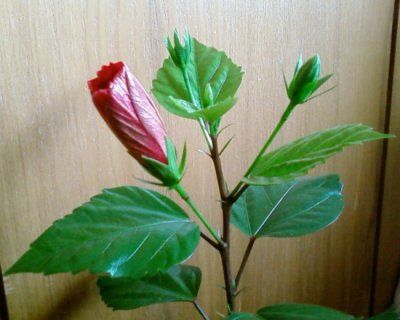
Hibiscus inflorescences are characterized by an exotic appearance and large sizes: fully opened buds in diameter are 9-16 cm.
Video: Orchid part 1. My orchid watering method Fertilizers Simple principles for proper flower care
The shape of the flower is cup-shaped, inflorescences are both simple and double. In the center of each flower is a pistil, turning into stamens.
In the vast majority of varieties of Chinese rose, the flowers are devoid of any fragrance, however, there are also specimens with fragrant buds.Usually hibiscus flowers open in the morning, with sunrise, and by the evening they wither. With proper care, one branch during the day can please about 20 inflorescences, on some large plants up to 50 flowers can bloom at the same time.
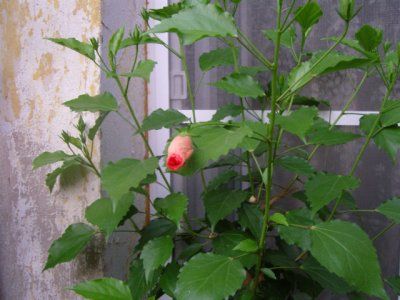
Hibiscus dormancy period
The dormant period of the Chinese rose lasts from November to February. During these months, the plant is best kept at temperatures between +14°С to +16. During its dormant period, hibiscus should receive enough light and moisture: should ensure good level lighting and moderate watering. It should be minimally disturbed at this time so that the plant can rest, gain strength and prepare for flowering.
The laying of new buds in the Chinese rose occurs at a temperature not higher than + 15 ° C. In February, hibiscus is placed closer to warmth and light, and the number of fertilizing and watering is gradually increased.You can also send a rosan for wintering, having previously trimmed it. To do this, in the fall you need to give him the opportunity to shed his leaves. To this end, watering is gradually reduced to a minimum. When the hibiscus leaves fall off, the stems are carefully cut, leaving “hemp” 6-8 cm long. Then the plant is transferred to a cool place (temperature environment at the same time it should not be higher than +12°C). To root system Chinese rose has not dried out, the soil needs to be slightly moistened from time to time.
Why does hibiscus not bloom indoor hibiscus?
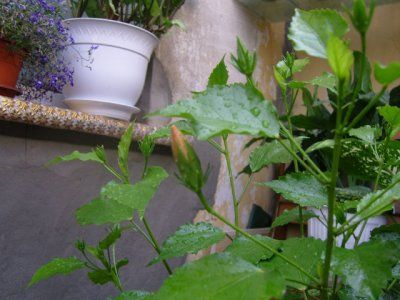 Many flower growers complain that hibiscus does not bloom at home, stands for years and does not want to bloom. Or sometimes a couple of buds appear and fall off without opening.
Many flower growers complain that hibiscus does not bloom at home, stands for years and does not want to bloom. Or sometimes a couple of buds appear and fall off without opening.
Video: #Hibiscus Chinese rose Blossoms in the garden
How to make a Chinese rose bloom?
A guarantee of flowering of any houseplant is to take proper care of it.
- The plant loves sunlight, so it should be kept in the brightest room. Hibiscus should be protected from direct sunlight.
- loves hibiscus and Fresh air in the summer: it can be taken out to the balcony or garden, but it must be protected from the wind.
- Watering in the summer should be plentiful (as the top layer of the earth dries up) and combined with daily spraying.
- The soil in the pot after watering should be slightly loosened to provide the roots with an influx of fresh air.
- In spring and summer, during its active growth, the Chinese rose prefers top dressing - it is advisable to carry them out 2-3 times a month. For this purpose, it is better to choose complex mineral or organic fertilizers, with a low concentration.
These are the elementary rules for keeping hibiscus. But often, even with their observance, there were no flowers, and no. This phenomenon occurs due to the fact that 2 Key Requirements for Rose Flowering:
- Rosan must be sent to rest in the cold season -
- Perform branch pruning.
Practice shows that the content of hibiscus does not require any extra effort from the grower. The key to health, attractiveness and lush flowering plants favor proper care and provide optimal conditions for overwintering.
A photo
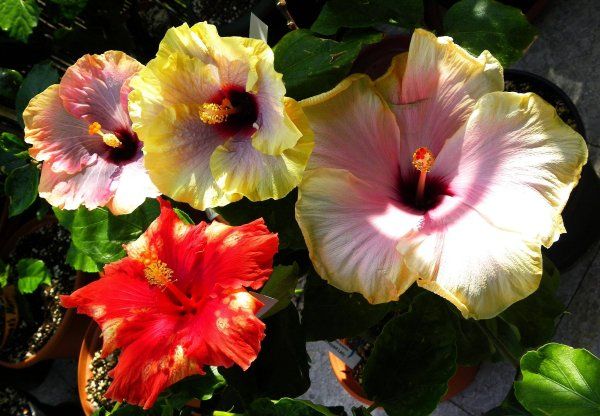
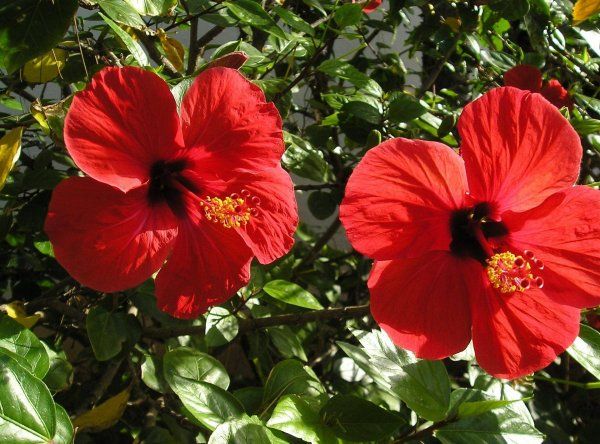

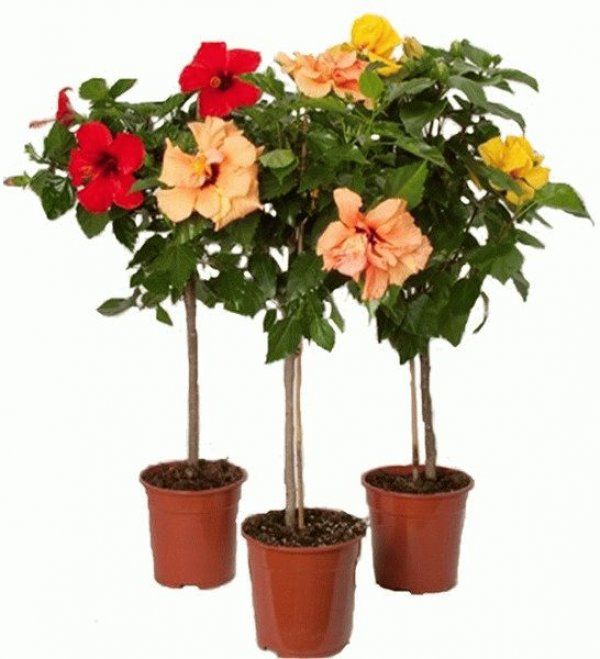
Useful video
Learn more about Chinese rose bloom in the following video:
Video: How easy it is to kill an orchid A lot of water is dangerous
Useful information
You can learn more about hibiscus from other materials.

